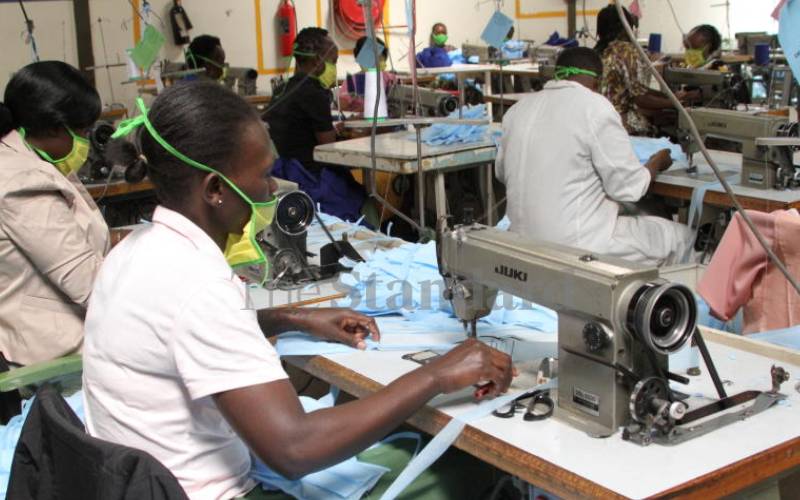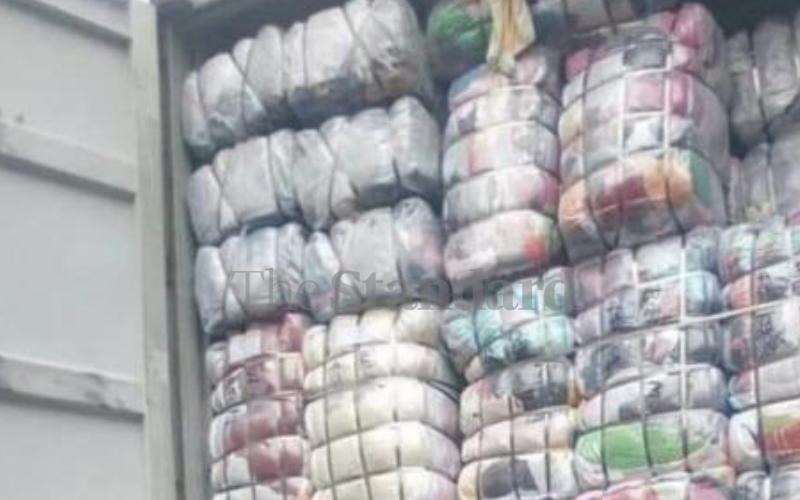[ad_1]

Clothing marketplace specialist Rajeev Arora, Chairperson Kenya Fashion Council Akinyi Odongo and Presidential Advisor on SMEs Anne Mutahi throughout the start of the Fashion DNA Kenya Desires Examination Report in Nairobi. [Jonah Onyango, Standard]
A new report has dissected Kenya’s vogue field, citing worries in pricing and costing of area goods as one of the reasons overseas outfits brand names are thriving in the place.
The report by the British Council, titled Fashion DNA: Kenya Demands Assessment, argues that vendors and style designers in Kenya lack skilled suggestions.
This, the report launched final week in Nairobi claims, carries on to restrict their advancement and options to innovate.
The report more mentions capabilities limitations in pricing and costing and how to merchandise and model as some of the difficulties negatively influencing the interactions involving stores and vogue designers.
This, the report says, is a indicator the marketplace needs aid.
“These worries make additional chances for international suppliers to enter the Kenyan vogue ecosystem and flourish,” says the report.
The findings were collected among October 2019 and February 2020 with further study carried out in April 2020.
The report describes the country’s trend marketplace as “messy and unstructured.”
It is also “poorly informed and uncommunicative.” This describes why those interviewed explained the Kenyan style scene as complicated and somewhat sophisticated, difficult to figure out and satisfy.
They also stated there is a desire for Western-like attire amid the city population. Such gaps give global brand names alternatives, which they maximise.

Textile trainees at NYS headquarters in Nairobi, Might 29, 2020. [David Njaaga, Standard]
One particular of these gaps, which the report claims is significant when in contrast to other nations around the world, is that Kenya does not have definitive countrywide wear.
“Global trend tendencies pick up speedy in the nearby market, and there is no definite Kenyan regular apparel or garment model as is the scenario with most nations in the East African Local community these kinds of as Uganda, Tanzania, Ethiopia and Rwanda,” reads the report.
Also, the rural market place also looks disinterested or unmoved by just about anything made domestically.
The report states irrespective of possessing textile functions that could source designers (with 17 operational textile mills as of June 2019, according to accessible governing administration information), the Kenyan style and clothing business is nevertheless to make a major mark on the world wide current market in comparison to other creating countries such as Ethiopia and Vietnam.
“Among the explanations for the standing quo, textile mills depend on more mature technological know-how and suffer from lower ranges of skilled labour, reduced productiveness and at the same time incur substantial expenditures of upkeep and overheads due to previous devices,” the report suggests.
It further notes that the global manner marketplace features a huge opportunity for acquiring nations this sort of as Kenya as a sourcing destination. “The Kenyan textile and clothes marketplace is estimated to signify .6 per cent of gross domestic solution and six for every cent of the whole producing sector,” the report claims.
Companies, according to the report, nonetheless presume a wait-and-see perspective irrespective of the 2019 revival of Rivatex the authorities, which features many alternatives for the market. The report also found out that nearby designers have been forced to use superior-price tag imported textiles or lower-high-quality community fibre that involve extra processing.
“Additionally, the leather-based industry for trend goods and equipment suffers identical challenges,” states the report.
Though a vast majority of nearby designers are included in attire output, with the state getting an approximated 70,000 apparel producing companies, a greater part of them are small-scale functions and typically not complete-time. Other people are unregistered entities.

Bales of next-hand apparel at a container in Gikomba industry, Nairobi. [Jacinta Mutura, Standard]
These challenges are punctuated by the actuality that the country’s clothes sector is largely 2nd-hand, courtesy of mitumba – which are employed dresses, some of them designer wears, imported from overseas.
The report notes that second-hand outfits in the nation take pleasure in recognition and desire owing to their affordability, broad range, quality apparel and also the presence of significant-finish designer attire and leather-based goods.
“For occasion, whilst clothing this kind of as Versace and Gucci can be costly when sourced new from chain outlets, they are offered in the next-hand industry for as reduced as $10 (Sh1,143),” reads the report.
The very same applies to leather products these as footwear and baggage, which the report claims there is a notion of quality thanks to the wide range obtainable.
“Individuals with an hunger for vogue and tendencies can quickly discover stylish unique clothing and footwear in the second-hand industry,” suggests the report.
It illustrates that a luxurious worldwide brand name would go for Sh70,000, even though a 2nd-hand one ranges amongst Sh20 and Sh1,000.
The report juxtaposes the Kenyan sector with Ethiopia’s, which it notes is estimated to enhance the country’s exports by $30 billion (Sh3.4 trillion) in clothing and textiles. Germany and the United States are the key industry destinations.
[ad_2]
Supply hyperlink



